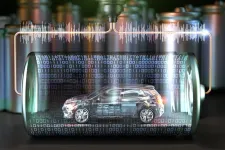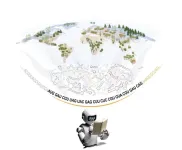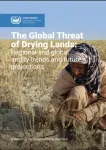New AI cracks complex engineering problems faster than supercomputers
The shape-shifting technological solution could be a game-changer for engineering designs
2024-12-09
(Press-News.org) Modeling how cars deform in a crash, how spacecraft responds to extreme environments, or how bridges resist stress could be made thousands of times faster thanks to new artificial intelligence that enables personal computers to solve massive math problems that generally require supercomputers.
The new AI framework is a generic approach that can quickly predict solutions to pervasive and time-consuming math equations needed to create models of how fluids or electrical currents propagate through different geometries, like those involved in standard engineering testing.
Details about the research appear in Nature Computational Science.
Called DIMON (Diffeomorphic Mapping Operator Learning), the framework solves ubiquitous math problems known as partial differential equations that are present in nearly all scientific and engineering research. Using these equations, researchers can translate real-world systems or processes into mathematical representations of how objects or environments will change over time and space.
“While the motivation to develop it came from our own work, this is a solution that we think will have generally a massive impact on various fields of engineering because it's very generic and scalable,” said Natalia Trayanova, a Johns Hopkins University biomedical engineering and medicine professor who co-led the research. “It can work basically on any problem, in any domain of science or engineering, to solve partial differential equations on multiple geometries, like in crash testing, orthopedics research, or other complex problems where shapes, forces, and materials change.”
In addition to demonstrating the applicability of DIMON in solving other engineering problems, Trayanova’s team tested the new AI on over 1,000 heart “digital twins,” highly detailed computer models of real patients’ hearts. The platform was able to predict how electrical signals propagated through each unique heart shape, achieving high prognostic accuracy.
Trayanova’s team relies on solving partial differential equations to study cardiac arrhythmia, which is an electrical impulse misbehavior in the heart that causes irregular beating. With their heart digital twins, researchers can diagnose whether patients might develop the often-fatal condition and recommend ways to treat it.
“We’re bringing novel technology into the clinic, but a lot of our solutions are so slow it takes us about a week from when we scan a patient’s heart and solve the partial differential equations to predict if the patient is at high risk for sudden cardiac death and what is the best treatment plan,” said Trayanova, who directs the Johns Hopkins Alliance for Cardiovascular Diagnostic and Treatment Innovation. “With this new AI approach, the speed at which we can have a solution is unbelievable. The time to calculate the prediction of a heart digital twin is going to decrease from many hours to 30 seconds, and it will be done on a desktop computer rather than on a supercomputer, allowing us to make it part of the daily clinical workflow.”
Partial differential equations are generally solved by breaking complex shapes like airplane wings or body organs into grids or meshes made of small elements. The problem is then solved on each simple piece and recombined. But if these shapes change—like in crashes or deformations—the grids must be updated and the solutions recalculated, which can be computationally slow and expensive.
DIMON solves that problem by using AI to understand how physical systems behave across different shapes, without needing to recalculate everything from scratch for each new shape. Instead of dividing shapes into grids and solving equations over and over, the AI predicts how factors such as heat, stress, or motion will behave based on patterns it has learned, making it much faster and more efficient in tasks like optimizing designs or modeling shape-specific scenarios.
The team is incorporating into the DIMON framework cardiac pathology that leads to arrhythmia. Because of its versatility, the technology can be applied to shape optimization and many other engineering tasks where solving partial differential equations on new shapes is repeatedly needed, said Minglang Yin, a Johns Hopkins Biomedical Engineering Postdoctoral Fellow who developed the platform.
“For each problem, DIMON first solves the partial differential equations on a single shape and then maps the solution to multiple new shapes. This shape-shifting ability highlights its tremendous versatility,” Yin said. “We are very excited to put it to work on many problems as well as to provide it to the broader community to accelerate their engineering design solutions.”
Other authors are Nicolas Charon of University of Houston, Ryan Brody and Mauro Maggioni (co-lead) of Johns Hopkins, and Lu Lu of Yale University.
This work is supported by NIH grants R01HL166759 and R01HL174440; a grant from the Leducq Foundations; the Heart Rhythm Society Fellowship; U.S. Department of Energy grants DE-SC0025592 and DE-SC0025593; NSF grants DMS-2347833, DMS-1945224, and DMS-2436738; and Air Force Research Laboratory awards FA9550-20-1-0288, FA9550-21-1-0317, and FA9550-23-1-0445.
END
ELSE PRESS RELEASES FROM THIS DATE:
2024-12-09
The batteries of electric vehicles subject to the normal use of real world drivers - like heavy traffic, long highway trips, short city trips, and mostly being parked - could last about a third longer than researchers have generally forecast, according to a new study by scientists working in the SLAC-Stanford Battery. Center, a joint center between Stanford University's Precourt Institute for Energy and SLAC National Accelerator Laboratory, This suggests that the owner of a typical EV may not need to replace the expensive battery pack or buy a new car for several additional years.
Almost always, battery scientists and engineers have tested ...
2024-12-09
A pioneering Artificial Intelligence (AI) powered model able to understand the sequences and structure patterns that make up the genetic “language” of plants, has been launched by a research collaboration.
Plant RNA-FM, believed to be the first AI model of its kind, has been developed by a collaboration between plant researchers at the John Innes Centre and computer scientists at the University of Exeter.
The model, say its creators, is a smart technological breakthrough that can drive discovery and innovation in plant science and potentially across the study of invertebrates ...
2024-12-09
Metabolic dysfunction-associated steatotic liver disease (MASLD), formerly referred to as nonalcoholic fatty liver disease (NAFLD), impacts roughly 30% of the global adult population. The disease spans from benign fat accumulation in the liver (steatosis) to its more severe form, metabolic dysfunction-associated steatohepatitis (MASH, formerly nonalcoholic steatohepatitis or NASH). MASH represents a dangerous progression, with the potential to cause cirrhosis, liver cancer, type 2 diabetes, and cardiovascular disease.
Despite ...
2024-12-09
Even as dramatic water-related disasters such as floods and storms intensified in some parts of the world, more than three-quarters of Earth’s land became permanently drier in recent decades, UN scientists warned today in a stark new analysis.
Some 77.6% of Earth’s land experienced drier conditions during the three decades leading up to 2020 compared to the previous 30-year period, according to the landmark report from the UN Convention to Combat Desertification (UNCCD).
Over the same period, drylands expanded by about 4.3 million km2 – an area nearly a third larger than India, the world’s ...
2024-12-09
AUSTIN, TX, Dec 09, 2024 – Hurricane Helene highlighted the increasing intensity of extreme weather events and the catastrophic flooding they can bring. A new study finds that many Americans residing in lower-quality public housing face a high risk of experiencing flood-related damages as their homes are disproportionately located in areas of high flood risk.
A study by scientists from the Ohio State University and Texas A&M University has combined HUD’s physical inspection scores of public housing units across the country (from 2013-2020) with ...
2024-12-09
A recent analysis reveals that the incidence rates of soft tissue sarcomas—cancers in muscle, fat, blood vessels, nerves, and tendons—are lower in young U.S. active-duty military servicemen compared with those in the general population, but higher in middle-aged servicemen, perhaps due to greater cumulative exposure to toxins. The findings are published by Wiley online in CANCER, a peer-reviewed journal of the American Cancer Society.
Soft tissue sarcomas are rare cancers arising all over the body, in various organs and tissues such as muscle, fat, and viscera. Most sarcomas arise sporadically, but a small subset arise from exposure to ...
2024-12-09
AUSTIN, TX, Dec 9, 2024 – Semivolatile organic compounds (SVOCs) are found in building materials and consumer products like carpeting, furniture and electronics. Gases released by these chemicals in homes, offices and schools pose potential human health risks such as cancers, reproductive disorders, and nervous system damage.
A recent study of the indoor air in central Texas high schools revealed that two groups of SVOCs, phthalates and PBDEs, are prevalent in high school environments. The ...
2024-12-09
AUSTIN, TX, Dec 9, 2024 – Limiting red meat consumption is key to a sustainable and healthy diet, yet Americans are among the world’s largest consumers of red meat. A new study reveals the demographics of American adults who choose not to eat red meat and finds that environmental concerns may matter more to them than health risks.
Researchers at Baruch College and the University of Southern California (USC) surveyed more than 7,500 adults as part of the Understanding America Study – a probability-based Internet panel of individuals 18 and older. They will present ...
2024-12-09
A little of what you fancy does you good… unless it’s a fizzy drink. Scientists studying the impact of sugar on the risk of cardiovascular disease have found that eating too much added sugar increases your risk of stroke or aneurysm, but eating a few treats is associated with a lower risk of cardiovascular diseases. Meanwhile, drinking sweetened beverages raises your risk of stroke, heart failure, and atrial fibrillation.
“The most striking finding from our study is the divergent relationship between different sources of added sugar and cardiovascular ...
2024-12-09
In short:
“We exist, therefore the universe is made to host us”: the anthropic principle has sparked intense debate in cosmology since its first formulation. A new paper published in JCAP proposes a way to test it. To falsify it, all three of the following conditions must be confirmed by observations:
• Cosmic inflation occurred
• Axions exist
• Dark matter is not made of axions
If all these conditions are proven true, the anthropic principle would lose its validity, and our universe would appear ...
LAST 30 PRESS RELEASES:
[Press-News.org] New AI cracks complex engineering problems faster than supercomputers
The shape-shifting technological solution could be a game-changer for engineering designs



